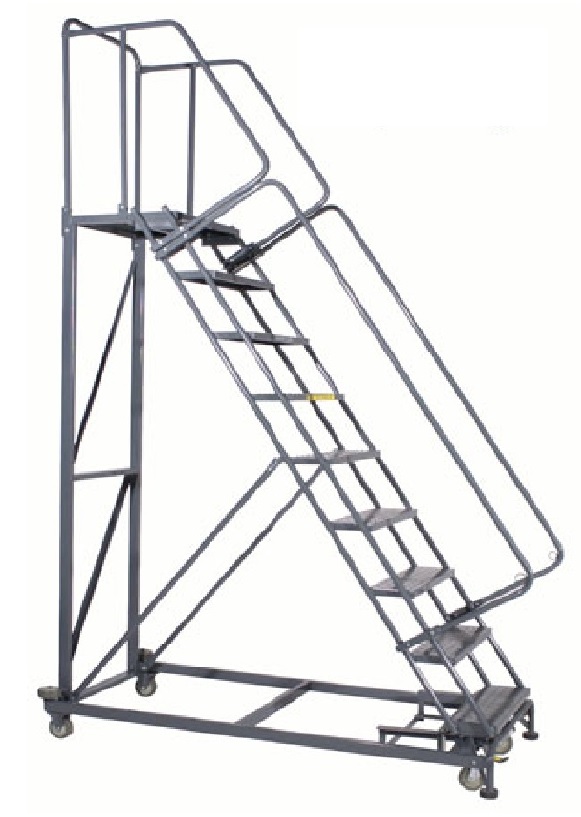A Brief History of Industrial Ladders
Industrial ladders are nothing new; evidence of ladders being used as tools of access are regularly found in archeological digs and excavations all over the world…and it’s suspected that a caveman by the name of Ugg was the inventor of the first ladder used in Stone Age times.
However, joking aside, in the Spider Caves near Valencia in Spain, a Mesolithic rock painting that has been dated at least 10,000 years old depicts a ladder being used. From the drawing, it appears that the protagonists are on their way to harvest honey from a wild bee nest, and the ladder appears to be made from woven grass.
Modern ladders made from aluminum and stainless steel are descended from their wooden forerunners, which, in turn, are believed to be descended from the first recognizable wooden ladders used by the ancient Egyptians and Hebrews dating back some 7,000 years. It is true to say that modern ladders bear little resemblance to those primitive creations — although at the time they would, in our modern parlance, have been considered “cutting-edge” technology.
During their thousands of years of existence, ladders have been put to many different uses, some not as salubrious or wholesome as others. In times past (and to an extent today), ladders have been used in warfare; images depict soldiers in medieval battle dress scaling the walls of well-defended castles and keeps in Europe and the Holy land during the Crusades.
Also, safe working platforms are different from working ladders; indeed, in many jurisdictions across the world, specific regulations prohibit ladders being used as work platforms, allowing them to be used only as access tools. Safe working practices for ladders include them being angled at about fifteen degrees to the vertical — which basically means the base of the ladder should be about one-third its length away from the upright surface to which access is being afforded. If a ladder is used at a steeper angle, the risk of toppling becomes more acute the higher up a person climbs and the more top-heavy it becomes. Indeed, an angle of elevation shallower than fifteen degrees means the ladder becomes susceptible to slippage. Ideally, one should have a second person hold the ladder secure at the bottom, and then tie it in to the vertical surface where possible, so single-person safe access can be achieved.
Information pertaining to Industrial Ladders and many other access solutions are available by contacting us toll free (888) 722-0311 or looking through our website.

